Current discussions about art are very much centered on the question of art activism—that is, on the ability of art to function as an arena and medium for political protest and social activism. The phenomenon of art activism is central to our time because it is a new phenomenon—quite different from the phenomenon of critical art that became familiar to us during recent decades. Art activists do not want to merely criticize the art system or the general political and social conditions under which this system functions. Rather, they want to change these conditions by means of art—not so much inside the art system but outside it, in reality itself. Art activists try to change living conditions in economically underdeveloped areas, raise ecological concerns, offer access to culture and education for the populations of poor countries and regions, attract attention to the plight of illegal immigrants, improve the conditions of people working in art institutions, and so forth. In other words, art activists react to the increasing collapse of the modern social state and try to replace the social state and the NGOs that for different reasons cannot or will not fulfill their role. Art activists do want to be useful, to change the world, to make the world a better place—but at the same time, they do not want to cease being artists. And this is the point where theoretical, political, and even purely practical problems arise.
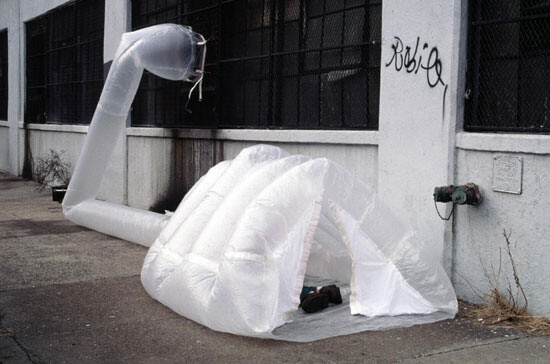

Art activism’s attempts to combine art and social action come under attack from both of these opposite perspectives—traditionally artistic and traditionally activist ones. Traditional artistic criticism operates according to the notion of artistic quality. From this point of view, art activism seems to be artistically not good enough: many critics say that the morally good intentions of art activism substitute for artistic quality. This kind of criticism is, actually, easy to reject. In the twentieth century, all criteria of quality and taste were abolished by different artistic avant-gardes—so, today, it makes no sense to appeal to them again. However, criticism from the other side is much more serious and demands an elaborate critical answer. This criticism mainly operates according to notions of “aestheticization” and “spectacularity.” A certain intellectual tradition rooted in the writings of Walter Benjamin and Guy Debord states that the aestheticization and spectacularization of politics, including political protest, are bad things because they divert attention away from the practical goals of political protest and towards its aesthetic form. And this means that art cannot be used as a medium of a genuine political protest—because the use of art for political action necessarily aestheticizes this action, turns this action into a spectacle and, thus, neutralizes the practical effect of this action. As an example, it is enough to remember the recent Berlin Biennale curated by Artur Żmijewski and the criticism it provoked—described as it was by different ideological sides as a zoo for art activists.
In other words, the art component of art activism is often seen as the main reason why this activism fails on the pragmatic, practical level—on the level of its immediate social and political impact. In our society, art is traditionally seen as useless. So it seems that this quasi-ontological uselessness infects art activism and dooms it to failure. At the same time, art is seen as ultimately celebrating and aestheticizing the status quo—and thus undermining our will to change it. So the way out of this situation is seen mostly in the abandoning of art altogether—as if social and political activism never fails as long as it is not infected by art viruses.
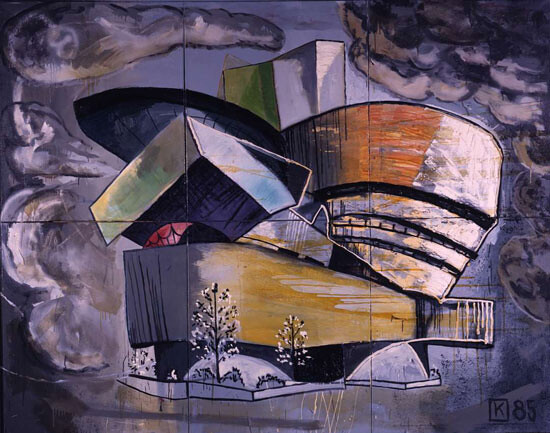

The critique of art as useless and therefore morally and politically bad is not a new one. In the past, this critique compelled many artists to abandon art altogether—and to start to practice something more useful, something morally and politically correct. However, contemporary art activism does not rush to abandon art but, rather, tries to make art itself useful. This is a historically new position. Its newness is often relativized by a reference to the phenomenon of the Russian avant-garde, which famously wanted to change the world by artistic means. It seems to me that this reference is incorrect. The Russian avant-garde artists of the 1920s believed in their ability to change the world because at the time their artistic practice was supported by Soviet authorities. They knew that power was on their side. And they hoped that this support would not decrease with time. Contemporary art activism has, on the contrary, no reason to believe in external political support. Art activism acts on its own—relying only on its own networks and on weak and uncertain financial support from progressively minded art institutions. This is, as I said, a new situation—and it calls for new theoretical reflection.
The central goal of this theoretical reflection is this: to analyze the precise meaning and political function of the word “aestheticization.” I believe that such an analysis allows us to clarify the discussions around art activism and the place where it stands and acts. I would argue that today, the word “aestheticization” is mostly used in a confused and confusing way. When one speaks about “aestheticization,” one often refers to different and even opposing theoretical and political operations. The reason for this state of confusion is the division of contemporary art practice itself into two different domains: art in the proper sense of the word, and design. In these two domains, aestheticization means two different things. Let us analyze this difference.


Aestheticization as Revolution
In the domain of design, the aestheticization of certain technical tools, commodities, or events involves an attempt to make them more attractive, seductive, and appealing to the user. Here aestheticization does not prevent the use of an aestheticized, designed object—on the contrary, it has the goal of enhancing and spreading this use by making it more agreeable. In this sense, we should see the whole art of the premodern past as, actually, not art but design. Indeed, the ancient Greeks spoke about “techne”—not differentiating between art and technology. If one looks at the art of ancient China, one finds well-designed tools for religious ceremonies and well-designed everyday objects used by court functionaries and intellectuals. The same can be said about the art of ancient Egypt and the Inca Empire: it is not art in the modern sense of the word, but design. And the same can be said about the art of the Old Regimes of Europe before the French Revolution—here we also find only religious design, or the design of power and wealth. Under contemporary conditions, design became omnipresent. Almost everything that we use is professionally designed to make it more attractive for the user. It is what we mean when we talk about a well-designed commodity: it is “a real work of art,” as we say about an iPhone, a beautiful airplane, and so forth.
The same can also be said about politics. We are living in a time of political design, of professional image making. When one speaks, for example, about the aestheticization of politics in reference to, let say, Nazi Germany, then one often means aestheticization as design—as an attempt to make the Nazi movement more attractive, more seductive. One thinks about the black uniforms, nightly fakelzüge, and so forth. Here it is important to see that this understanding of aestheticization as design has nothing to do with the notion of aestheticization as it was used by Walter Benjamin, as he was speaking about fascism as the aestheticization of politics. This other notion of aestheticization has its origin not in design but in modern art.
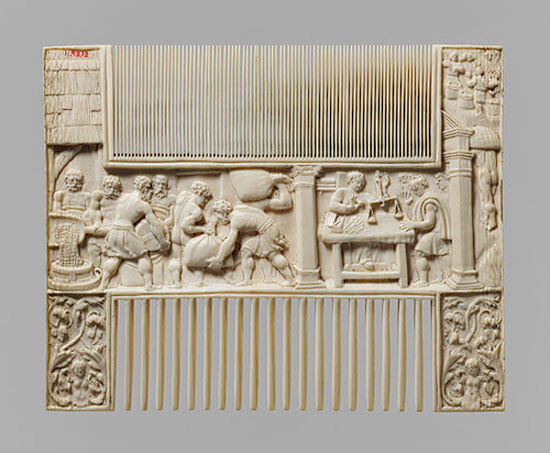

Indeed, artistic aestheticization does not refer to an attempt to make the functioning of a certain technical tool more attractive for the user. On the contrary, artistic aestheticization means the defunctionalization of this tool, the violent annulation of its practical applicability and efficiency. Our contemporary notion of art and art aestheticization has its roots in the French Revolution—in the decisions that were made by the French revolutionary government concerning the objects that this government inherited from the Old Regime. A change of regime—especially a radical change such as the one introduced by the French Revolution—is usually accompanied by a wave of iconoclasm. One could follow these waves in the cases of Protestantism, the Spanish conquest of the Americas, or the fall of the Socialist regimes in Eastern Europe. The French revolutionaries took a different course: instead of destroying the sacred and profane objects belonging to the Old Regime, they defunctionalized, or, in other words, aestheticized them. The French Revolution turned the design of the Old Regime into what we today call art, i.e., objects not of use but of pure contemplation. This violent, revolutionary act of aestheticizing the Old Regime created art as we know it today. Before the French Revolution, there was no art—only design. After the French Revolution, art emerged—as the death of design.
The revolutionary origin of aesthetics was conceptualized by Immanuel Kant in his Critique of the Power of Judgment. Near the beginning of this text, Kant makes clear its political context. He writes:
If someone asks me whether I find the palace that I see before me beautiful, I may well say that I do not like that sort of thing … ; in true Rousseauesque style I might even vilify the vanity of the great who waste the sweat of the people on such superfluous things … All of this might be conceded to me and approved; but that is not what is at issue here … One must not be in the least biased in favor of the existence of the thing, but must be entirely indifferent in this respect in order to play the judge in the matter of taste.1
Kant is not interested in the existence of a palace as a representation of wealth and power. However, he is ready to accept the palace as aestheticized, that is, negated, made nonexistent for all practical purposes—reduced to pure form. Here the inevitable question arises: What should one say about the decision by the French revolutionaries to substitute the aesthetic defunctionalization of the Old Regime for total iconoclastic destruction? And: Is the theoretical legitimation of this aesthetic defunctionalization that was proposed almost simultaneously by Kant a sign of the cultural weakness of the European bourgeoisie? Maybe it would be better to completely destroy the corpse of the Old Regime instead of exhibiting this corpse as art—as an object of pure aesthetic contemplation. I would argue that aestheticization is a much more radical form of death that traditional iconoclasm.
Already during the nineteenth century, museums were often compared to cemeteries, and museum curators to gravediggers. However, the museum is much more of a cemetery than any real cemetery. Real cemeteries do not expose the corpses of the dead; they conceal them. This is also true for the Egyptian pyramids. By concealing the corpses, cemeteries create an obscure, hidden space of mystery and thus suggest the possibility of resurrection. We have all read about ghosts, vampires leaving their graves, and other undead creatures wandering around cemeteries at night. We have also seen movies about a night in the museum: when nobody is looking, the dead bodies of the artworks come to life. However, the museum in the daylight is a place of definitive death that allows no resurrection, no return of the past. The museum institutionalizes the truly radical, atheistic, revolutionary violence that demonstrates the past as incurably dead. It is a purely materialistic death without return—the aestheticized material corpse functions as a testimony to the impossibility of resurrection. (Actually, this is why Stalin insisted so much on permanently exhibiting the dead Lenin’s body to the public. Lenin’s Mausoleum is a visible guarantee that Lenin and Leninism are truly dead. That is also why the current leaders of Russia do not hurry to bury Lenin—contrary to the appeals made by many Russians to do so. They do not want the return of Leninism, which would become possible if Lenin were buried.)
Thus, since the French Revolution, art has been understood as the defunctionalized and publicly exhibited corpse of the past. This understanding of art determined postrevolutionary art strategies—until now. In an art context, to aestheticize the things of the present means to discover their dysfunctional, absurd, unworkable character—everything that makes them nonusable, inefficient, obsolete. To aestheticize the present means to turn it into the dead past. In other words, artistic aestheticization is the opposite of aestheticization by means of design. The goal of design is to aesthetically improve the status quo—to make it more attractive. Art also accepts the status quo—but it accepts it as a corpse, after its transformation into a mere representation. In this sense, art sees contemporaneity not merely from the revolutionary, but rather, the postrevolutionary perspective. One can say: modern and contemporary art sees modernity and contemporaneity as the French revolutionaries saw the design of the Old Regime—as already obsolete, reducible to pure form, already a corpse.
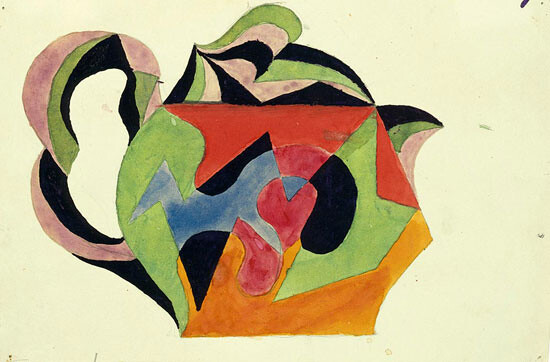

Aestheticizing Modernity
Actually, this is especially true of the artists of the avant-garde, who are often mistakenly interpreted as being heralds of a new technological world—as ushering in the avant-garde of technological progress. Nothing is further from the historical truth. Of course, the artists of the historical avant-garde were interested in technological, industrialized modernity. However, they were interested in technological modernity only with the goal of aestheticizing modernity, defunctionalizing it, to reveal the ideology of progress as phantasmal and absurd. When one speaks about the avant-garde in its relationship to technology, one usually has a specific historical figure in mind: Filippo Tommaso Marinetti and his “Futurist Manifesto” that was published on the front page of the newspaper Figaro in 1909.2 The text condemned the “passéistic” cultural taste of the bourgeoisie and celebrated the beauty of the new industrial civilization (“a roaring motor car which seems to run on machine-gun fire is more beautiful than the Winged Victory of Samothrace”), glorified war as the “hygiene of the world,” and wished “to destroy museums, libraries, and academies of any sort.” The identification with the ideology of progress seems here to be complete. However, Marinetti did not publish the text of the “Futurist Manifesto” isolated, but included it inside a story that begins with a description of how he interrupted a long nightly conversation with his friends about poetry by calling them to stand up and drive far away in a speedy car. And so they did. Marinetti writes: “And we, like young lions, chased after Death … Nothing at all worth dying for, other than the desire to divest ourselves finally of the courage that weighed us down.” And the divestment took place. Marinetti describes the nocturnal ride further: “How ridiculous! What a nuisance! … I braked hard and to my disgust the wheels left the ground and I flew into a ditch. O mother of a ditch, brimful with muddy water! … How I relished your strength-giving sludge that reminded me so much of the saintly black breasts of my Sudanese nurse.”
I will not dwell too long on this figure of the return to the mother’s womb and to the nurse’s breasts after a frenetic ride in a car towards death—it is all sufficiently obvious. It is enough to say that Marinetti and his friends were hoisted out of the ditch by a group of fishermen and, as he writes, “some gouty old naturalists”—that is, by the same passéists against which the manifesto is directed. Thus, the manifesto opens with a description of the failure of its own program. And so it is no wonder that the text fragment that follows the manifesto repeats the figure of defeat. Following the logic of progress, Marinetti envisions the coming of a new generation for which he and his friends will appear, in their turn, as the hated passéists that should be destroyed. But he writes that when the agents of this coming generation try to destroy him and his friends, they will find them “on a winter’s night, in a humble shed, far away in the country, with an incessant rain drumming upon it, and they’ll see us huddling anxiously together … warming our hands around the flickering flames of our present-day books.”
This passages show that for Marinetti, to aestheticize technologically driven modernity does not mean to glorify it or try to improve it, to make it more efficient by means of better design. On the contrary, from the beginning of his artistic career Marinetti looked at modernity in retrospect, as if it had already collapsed, as if it had already become a thing of the past—imagining himself in the ditch of History, or at best sitting in the countryside under incessant post-apocalyptic rain. And in this retrospective view, technologically driven, progress-oriented modernity looks like a total catastrophe. It is hardly an optimistic perspective. Marinetti envisions the failure of his own project—but he understands this failure as a failure of progress itself, which leaves behind only debris, ruins, and personal catastrophes.


I have quoted Marinetti at some length because it is precisely Marinetti whom Benjamin calls as the crucial witness when, in the afterword to his famous essay about “The Work of Art in the Age of Mechanical Reproduction,” Benjamin formulates his critique of the aestheticization of politics as the fascist undertaking par excellence—the critique that still weighs heavily on any attempt to bring art and politics together.3 To make his point, Benjamin cites a later text by Marinetti on the Ethiopian War in which Marinetti draws parallels between modern war operations and the poetic and artistic operations used by Futurist artists. In this text, Marinetti famously speaks about “the metallization of the human body.” “Metallization” here has only one meaning: the death of the body and its turning into a corpse, understood as an art object. Benjamin interprets this text as a declaration of war by art against life, and summarizes the fascist political program with these words: “Fiat art—pereas mundi” (Let there be art—let the world perish.) And Benjamin writes further that fascism is the fulfillment of the l’art pour l’art movement.
Of course, Benjamin’s analysis of Marinetti’s rhetoric is correct. But there is still one crucial question here: How reliable is Marinetti as a witness? Marinetti’s fascism is an already aestheticized fascism—fascism understood as a heroic acceptance of defeat and death. Or as pure form—a pure representation that a writer has of fascism when this writer is sitting alone under an incessant rain. The real fascism wanted, of course, not defeat but victory. Actually, in the late 1920s and 1930s, Marinetti became less and less influential in the Italian fascist movement, which practiced precisely not the aestheticization of politics but the politicization of aesthetics by using Novecento and Neoclassicism and, yes, also Futurism for its political goals—or, we can say, for its political design.
In his essay, Benjamin opposes the fascist aestheticization of politics to the Communist politicization of aesthetics. However, in Russian and Soviet art of the time, the lines were drawn in a much more complicated way. We speak today of the Russian avant-garde, but the Russian artists and poets of that time spoke about Russian Futurism—and then Suprematism and Constructivism. In these movements we find the same phenomenon of the aestheticization of Soviet Communism. Already in his text “On the Museum” (1919), Kazimir Malevich not only calls upon his comrades to burn the art heritage of previous epochs, but also to accept the fact that “everything that we do is done for the crematorium.”4 In the same year, in his text “God is Not Cast Down,” Malevich argues that to achieve the perfect material conditions of human existence, as the Communists planned, is as impossible as achieving the perfection of the human soul, as the Church previously wanted.5 The founder of Soviet Constructivism, Vladimir Tatlin, built a model of his famous Monument to the Third International that was supposed to rotate but could not, and later, a plane that could not fly (the so-called Letatlin). Here again, Soviet Communism was aestheticized from the perspective of its historical failure, of its coming death. And again in the Soviet Union, the aestheticization of politics was turned later into the politicization of aesthetics—that is, into the use of aesthetics for political goals, as political design.
I do not want, of course, to say that there is no difference between fascism and Communism—this difference is immense and decisive. I only want to say that the opposition between fascism and Communism does not coincide with the difference between the aestheticization of politics rooted in modern art and the politicization of aesthetics rooted in political design.
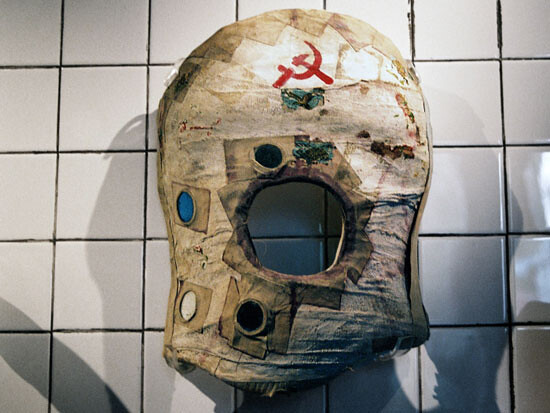

I hope that the political function of these two divergent and even contradictory notions of aestheticization—artistic aestheticization and design aestheticization—has now became more clear. Design wants to change reality, the status quo—it wants to improve reality, to make it more attractive, better to use. Art seems to accept reality as it is, to accept the status quo. But art accepts the status quo as dysfunctional, as already failed—that is, from the revolutionary, or even postrevolutionary, perspective. Contemporary art puts our contemporaneity into art museums because it does not believe in the stability of the present conditions of our existence—to such a degree that contemporary art does not even try to improve these conditions. By defunctionalizing the status quo, art prefigures its coming revolutionary overturn. Or a new global war. Or a new global catastrophe. In any case, an event that will make the entirety of contemporary culture, including all its aspirations and projections, obsolete—as the French Revolution made all the aspirations, intellectual projections, and utopias of the Old Regime obsolete.
Contemporary art activism is the heir of these two contradictory traditions of aestheticization. On the one hand, art activism politicizes art, uses art as political design—that is, as a tool in the political struggles of our time. This use is completely legitimate—and any critique of this use would be absurd. Design is an integral part of our culture, and it would make no sense to forbid its use by politically oppositional movements under the pretext that this use leads to the spectacularization, the theatralization of political protest. After all, there is a good theater and bad theater.
But art activism cannot escape a much more radical, revolutionary tradition of the aestheticization of politics—the acceptance of one’s own failure, understood as a premonition and prefiguration of the coming failure of the status quo in its totality, leaving no room for its possible improvement or correction. The fact that contemporary art activism is caught in this contradiction is a good thing. First of all, only self-contradictory practices are true in a deeper sense of the word. And secondly, in our contemporary world, only art indicates the possibility of revolution as a radical change beyond the horizon of our present desires and expectations.


Aestheticization and the U-Turn
Thus, modern and contemporary art allows us to look at the historical period in which we live from the perspective of its end. The figure of Angelus Novus as described by Benjamin relies on the technique of artistic aestheticization as it was practiced by postrevolutionary European art.6 Here we have the classical description of philosophical metanoia, of the reversal of the gaze —Angelus Novus turns his back towards the future and looks back on the past and present. He still moves into the future—but backwards. Philosophy is impossible without this kind of metanoia, without this reversal of the gaze. Accordingly, the central philosophical question was and still is: How is philosophical metanoia possible? How does the philosopher turn his gaze from the future to the past and adopt a reflective, truly philosophical attitude towards the world? In older times, the answer was given by religion: God (or gods) were believed to open to the human spirit the possibility of leaving the physical world—and looking back on it from a metaphysical position. Later, the opportunity for metanoia was offered by Hegelian philosophy: one could look back if one happened to be present at the end of history—at the moment when the further progress of the human Spirit became impossible. In our postmetaphysical age, the answer has been formulated mostly in vitalistic terms: one turns back if one reaches the limits of one’s own strength (Nietzsche), if one’s desire is repressed (Freud), or if one experiences the fear of death or the extreme boredom of existence (Heidegger).
But there is no indication of such a personal, existential turning point in Benjamin’s text—only a reference to modern art, to an image by Klee. Benjamin’s Angelus Novus turns his back to the future simply because he knows how to do it. He knows because he learned this technique from modern art—also from Marinetti. Today, the philosopher does not need any subjective turning point, any real event, any meeting with death or with something or somebody radically other. After the French Revolution, art developed techniques for defunctionalizing the status quo that were aptly described by the Russian Formalists as “reduction,” the “zero device,” and “defamiliarization.” In our time, the philosopher has only to take a look at modern art, and he or she will know what to do. And this is precisely what Benjamin did. Art teaches us how to practice metanoia, a U-turn on the road towards the future, on the road of progress. Not coincidentally, when Malevich gave a copy of one of his own books to poet Daniil Kharms, he inscribed it as follows: “Go and stop progress.”
And philosophy can learn not only horizontal metanoia—the U-turn on the road of progress—but also vertical metanoia: the reversal of upward mobility. In the Christian tradition, this reversal had the name “kenosis.” In this sense, modern and contemporary art practice can be called kenotic.
Indeed, traditionally, we associate art with a movement towards perfection. The artist is supposed to be creative. And to be creative means, of course, to bring into the world not only something new, but also something better—better functioning, better looking, more attractive. All these expectations make sense—but as I have already said, in today’s world, all of them are related to design and not to art. Modern and contemporary art wants to make things not better but worse—and not relatively worse but radically worse: to make dysfunctional things out of functional things, to betray expectations, to reveal the invisible presence of death where we tend to see only life.
This is why modern and contemporary art is not popular. It is not popular precisely because art goes against the normal way things are supposed to go. We are all aware of the fact that our civilization is based on inequality, but we tend to think that this inequality should be corrected by upward mobility—by letting people realize their talents, their gifts. In other words, we are ready to protest against the inequality dictated by the existing systems of power—but at the same time, we are ready to accept the notion of the unequal distribution of natural gifts and talents. However, it is obvious that the belief in natural gifts and creativity is the worst form of social Darwinism, biologism, and, actually, neoliberalism, with its notion of human capital. In his lectures on the “birth of biopolitics,” Michel Foucault stresses that the neoliberal concept of human capital has a utopian dimension—and constitutes, in fact, the utopian horizon of contemporary capitalism.7
As Foucault shows, the human being ceases here to be seen merely as labor power sold on the capitalist market. Instead, the individual becomes an owner of a nonalienated set of qualities, capabilities, and skills that are partially hereditary and innate, and partially produced by education and care—primarily from one’s own parents. In other words, we are speaking here about an original investment made by nature itself. The world “talent” expresses this relationship between nature and investment well enough—talent being a gift from nature and at the same time a certain sum of money. Here the utopian dimension of the neoliberal notion of human capital becomes clear enough. Participation in the economy loses its character of alienated and alienating work. The human being becomes a value in itself. And even more importantly, the notion of human capital, as Foucault shows, erases the opposition between consumer and producer—the opposition that risks tearing apart the human being under the standard conditions of capitalism. Foucault indicates that in terms of human capital, the consumer becomes a producer. The consumer produces his or her own satisfaction. And in this way, the consumer lets his or her human capital grow.8
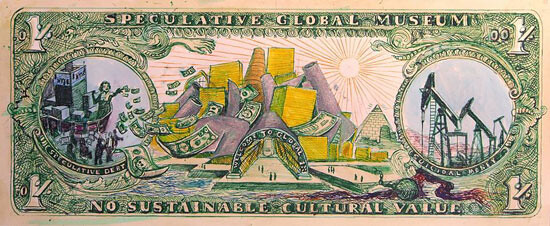

At the beginning of the 1970s, Joseph Beuys was inspired by the idea of human capital. In his famous Achberger Lectures that were published under the title Art=Capital (Kunst=Kapital), he argues that every economic activity should be understood as creative practice—so that everybody becomes an artist.9 Then the expanded notion of art (erweiterter Kunstbegriff) will coincide with the expanded notion of economy (erweiterter Oekonomiebegriff). Here Beuys tries to overcome the inequality that for him is symbolized by the difference between creative, artistic work and noncreative, alienated work. To say that everybody is an artist means for Beuys to introduce universal equality by means of the mobilization of those aspects and components of everyone’s human capital that remain hidden and inactive under standard market conditions. However, during the discussions that followed the lectures, it became clear that the attempt by Beuys to base social and economic equality on equality between artistic and nonartistic activity does not really function. The reason for this is simple: according to Beuys, a human being is creative because nature gave him/her the initial human capital—precisely the capacity to be creative. So art practice remains dependent on nature—and, thus, on the unequal distribution of natural gifts.
However, many leftist and Socialist theoreticians remained under the spell of the idea of upward mobility—be it individual or collective. This can be illustrated by a famous quote from the end of Leon Trotsky’s book Revolution and Literature:
Social construction and psychophysical self-education will become two aspects of the same process. All the arts—literature, drama, painting, music, and architecture will lend this process beautiful form … Man will become immeasurably stronger, wiser, and subtler; his body will become more harmonized, his movement more rhythmic, his voice more musical … The average human type will rise to the heights of an Aristotle, a Goethe, or a Marx. And above this ridge new peaks will rise.10
It is this artistic, social, and political alpinism—in its bourgeois and Socialist forms—from which modern and contemporary art tries to save us. Modern art is made against the natural gift. It does not develop “human potential” but annuls it. It operates not by expansion but by reduction. Indeed, a genuine political transformation cannot be achieved according to the same logic of talent, effort, and competition on which the current market economy is based, but only by metanoia and kenosis—by a U-turn against the movement of progress, a U-turn against the pressure of upward mobility. Only in this way can we escape the pressure of our own gifts and talents, which enslaves and exhausts us by pushing us to climb one mountain after another. Only if we learn to aestheticize the lack of gifts as well as the presence of gifts, and thus not differentiate between victory and failure, do we escape the theoretical blockage that endangers contemporary art activism.
There is no doubt that we are living in a time of total aestheticization. This fact is often interpreted as a sign that we have reached a state after the end of history, or a state of total exhaustion that makes any further historical action impossible. However, as I have tried to show, the nexus between total aestheticization, the end of history, and the exhaustion of vital energies is illusionary. Using the lessons of modern and contemporary art, we are able to totally aestheticize the world—i.e., to see it as being already a corpse—without being necessarily situated at the end of history or at the end of our vital forces. One can aestheticize the world—and at the same time act within it. In fact, total aestheticization does not block political action; it enhances it. Total aestheticization means that we see the current status quo as already dead, already abolished. And it means further that every action that is directed towards the stabilization of the status quo will ultimately show itself as ineffective—and every action that is directed towards the destruction of the status quo will ultimately succeed. Thus, total aestheticization not only does not preclude political action; it creates an ultimate horizon for successful political action, if this action has a revolutionary perspective.
Immanuel Kant, Critique of the Power of Judgment, ed. Paul Guyer (Cambridge: Cambridge University Press 2000), 90–91.
F. T. Marinetti, “The Foundation and Manifesto of Futurism,” in Critical Writings (New York: Farrar, Strauss and Giroux, 2006), 11–17.
Walter Benjamin, “The Work of Art in the Age of Mechanical Reproduction,” Illuminations (New York: Schocken, 1992).
Kazimir Malevich, “On the Museum,” in Essays on Art, vol. 1 (New York: George Wittenborn, 1971), 68–72.
Kazimir Malevich, “God is Not Cast Down,” ibid., 188–223.
Walter Benjamin, “Ueber den Begriff der Geschichte,” in Gesammelte Schriften, vol. 1–2 (Frankfurt am Main: Suhrkamp Verlag, 1974).
Michel Foucault, The Birth of Biopolitics: Lectures at the Collège de France 1978–1979 (New York: Palgrave Macmillan, 2008), 215ff.
Ibid., 226.
Joseph Beuys, Kunst=Kapital (Wangen/Allgäu: FIU-Verlag, 1992).
Leon Trotsky, Literature and Revolution, ed. William Keach (Chicago: Haymarket Books, 2005), 207.